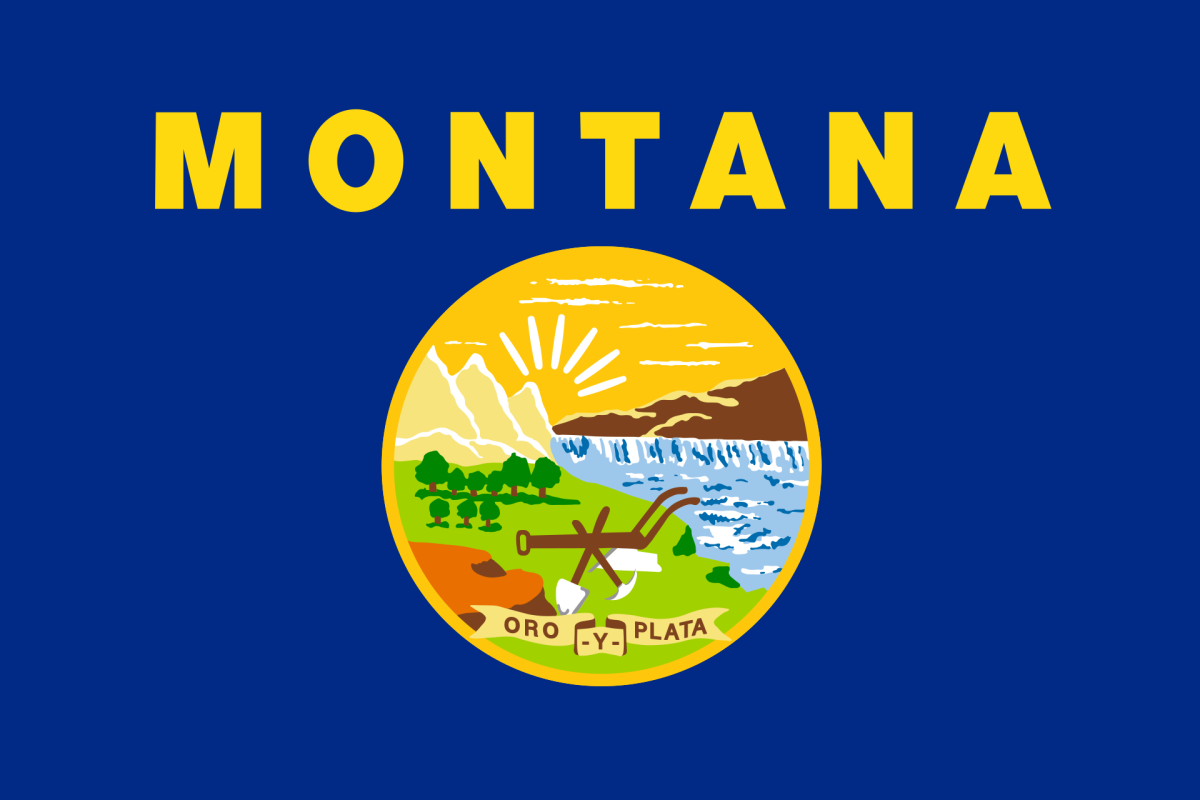Montana Personal Injury Laws

Montana experiences a considerable number of accidents per year. More than 210 individuals passed away in motor vehicle accidents in 2020, an increase from the 184 fatalities recorded in 2019. Another concerning trend is the prevalence of workers’ compensation claims, for which Montana has reported a higher injury rate than other states.
Sometimes, the initial compensation might not help you fully recover. Pursuing a personal injury claim, then, would be essential to secure the compensation you deserve. Filing a court action might seem intimidating, but note that you’re not the only one attempting to initiate a lawsuit. Indeed, in 2022, 471 petitions were filed solely to obtain workers’ compensation benefits.
More often than not, you’d also have to contact and work with multiple parties after an accident to recover compensation for your injuries. Some organizations you would have to deal with are medical providers, government agencies, and insurance companies.
This article aims to educate you on your legal rights regarding personal injury matters. It also contains a range of information, including Montana’s statute of limitations and caps on damages. Additionally, it provides legal resources that can assist you with your claims process.
Laws Involving Animal Collisions in Montana
Motor vehicle accidents involving animals are not uncommon in Montana. In fact, Big Sky Country ranks second in the list of states with the highest likelihood of such collisions. According to State Farm, 2.27% of all claims filed between July 2021 and June 2022 were due to animal-related crashes.
Other troubling trends can be observed in the state. The Montana Department of Transportation shows, for instance, that 9 out of 10 fatal crashes occur on rural roadways. Meanwhile, motorists who engage in roadway departure behavior — like veering off their lane — have a higher chance of incurring serious injuries or dying. Most of these severe accidents involve a single vehicle.
In such unfortunate circumstances, determining who is liable can be tricky. For instance, naturally, individuals cannot sue a deer. As such, they need to rely on insurance policies that include an add-on called comprehensive coverage. This add-on allows policyholders to manage costs brought on by animal collisions.
However, some cases may allow injured motorists to pursue claims against liable parties. The Montana Department of Fish, Wildlife and Parks warns that residents should not feed deer. These animals, according to the department, can become dependent on the food, which would bring a host of unwanted consequences. These effects include higher chances of mountain lion sightings and deer-car crashes. Those found to be feeding deer could be held liable for animal-related damage.
Deer are not the only animals prevalent in Montana lands. Bison, cattle, and sheep are also present within ranches. If a vehicle crashes into wandering livestock, neither the animal owner nor the affected driver are automatically liable.
In such cases, the plaintiff has to prove that the owner was grossly negligent as part of the claims process. State law defines gross negligence as actions that demonstrate someone’s serious lack of concern about whether they cause an injury to others.
Accident victims can also bring claims against livestock owners if the collision was caused by them intentionally letting their animals graze on interstate highways.
Montana Laws Related to Skiers and Ski Operators
More than 12 million tourists came to visit Montana in 2022. Some of these travelers, along with the state’s residents, ski at any one of Montana’s 14 snow resorts.
Accidents can happen within these areas. Unintentional falls were cited by the state's health agency as the top leading cause of hospitalizations in 2020. Visits to the emergency department were also primarily because of falls.
Knowing who is liable in a scenario helps navigate the legal process, especially in ski-related accidents. Under state law, ski area operators shoulder multiple responsibilities to ensure the safety of skiers. Some of these duties include installing rotating or flashing lights on vehicles operating in ski areas and using a trail board to signal openings and closures of various trails. Incidentally, the operator’s duty of care does not apply to trespassers.
Civil actions against property owners are possible if they engage in acts considered to be wanton and willful misconduct, gross negligence, or intentional tort.
Conversely, skiers should be aware that they also have legal responsibilities. Given that skiing is inherently dangerous, Montana law states that those who ski must accept liability for damage or injury related to their activity. In other words, damages from accidents caused by thin snow cover or visible snow equipment are not recoverable. However, skiers may press claims against operators if avalanches occur on open and designated trails.
Owners’ Liability for Dog Attacks in Montana
Montana is no stranger to dogs. In fact, the state ties with Arkansas regarding the highest percentage of households that own dogs, at 52%. An interesting statistic is that, despite the large number of people who keep these animals in Montana, the state recorded only six dog attacks against postal workers in 2022. This number, though, is higher than the figures from 2021, which noted five incidents.
Since the chances of being injured in a dog attack are not zero, individuals should know how liability is measured against pet owners. Under state law, those whose dogs attacked someone without provocation are liable for the victim’s damages.
Furthermore, Montana distinguishes between who can claim damages and who cannot. The state code considers those in a public place as valid claimants. It also adds that those who are lawfully in a private place may receive damages for their injuries. Meanwhile, people who are not lawfully in or on a property, otherwise known as trespassers, cannot recover damages from dog attacks.
Some cities in Montana impose additional requirements for dog owners of various breeds. Certain municipalities have even stricter rules, banning specific dog breeds altogether. For example, the City of White Sulphur Springs mandates owners of pit bulls and rottweilers to carry at least $500,000 in liability insurance. The City of Baker, meanwhile, bans wolf-dog hybrids as pets.
Similar to Baker, Billings does not allow wolf-dog hybrids. Those found to own such a dog are required to appear within 24 hours before the municipal judge, who will decide to either euthanize the animal or banish it from the city. The same policy applies to dogs that cause severe injuries to people.
Montana Workers’ Compensation Laws
The workplace injury rate in Montana in 2021 was 3.4 per 100 workers. This figure ranks the state fifth nationwide, behind Maine, Oregon, Vermont, and Washington. The Montana Department of Labor and Industry, through its 2021 report, shows that workers from the transportation, retail, and healthcare sectors represented a significant portion of accidents in the entire state.
With Montana having such a high rate of injuries per year, employees in the state must be knowledgeable about filing workers’ compensation claims. After getting injured, workers need to report the accident to their employer within 30 days. Businesses should then submit a First Report of Injury form to their insurer within six days of notice. These insurance companies have 30 days to either deny or accept a claim.
Insurers who drag their feet in paying accepted claims may face fines. Under state law, companies that fail to pay a claimant’s medical bills within 60 days of receipt can face penalties ranging from $200 to $1,000.
If their claims are denied, workers may appeal to the mediation unit under the Montana Department of Labor & Industry. Those whose appeals fall short can pursue claims before the state’s Workers’ Compensation Court. Although the court is located in Helena, trials are also held in Billings, Missoula, Great Falls, and Kalispell.
Sometimes, employers fail to carry workers’ compensation insurance. Montana maintains the Uninsured Employers Fund to help employees with their claims in such cases. The fund's purpose is to pay workers similar benefits they would be entitled to if their employer had insurance coverage. Businesses are not entirely off the hook under UEF, though; they must still compensate 100% of the workers' medical expenses and wage loss benefits.
Medical Malpractice Laws in Montana
According to the CDC, fatalities from traumatic brain injuries, or TBI, in Big Sky Country are among the highest in the nation. An analysis of deaths over three years revealed that Montana has a yearly TBI-related fatality rate of 29.5 per 100,000 people. This number puts the state third nationwide, behind Alaska and Wyoming.
Given Montana’s high rate of TBI-related fatalities, healthcare practitioners should be vigilant when treating patients. Nevertheless, some medical providers fail to provide patients with the proper care to recover.
There are multiple ways in which healthcare professionals can fall short in their service. Some physicians, for instance, misdiagnose conditions, which could lead to untreated infections. Other medical care providers, like anesthesiologists and surgeons, make errors during operations.
Before lawsuits can be filed before the court, state law requires that they be submitted for review before the Montana Medical Legal Panel. Plaintiffs must send in the Application for Review of Claim, which includes information regarding the act of malpractice, the physician or hospital, and witnesses.
The panel would then set a prehearing. This conference call between plaintiffs and defendants allows the panel to clarify details and receive evidence of the medical malpractice claim.
The next step is the hearing. In the proceedings, both parties present their cases. If they mutually agree on a settlement, it becomes binding. Under circumstances where the parties did not agree, the panel’s decision to recommend an award to the plaintiff is non-binding. The panel's judgments are not admissible as evidence in a court trial. These proceedings are confidential.
Montana Business Liability Insurance Requirements
Businesses in the state must secure workers’ compensation insurance. These policies typically have a minimum limit of $100,000 for the bodily injury or disease of one employee.
Another requirement set by Montana is auto liability insurance. Companies that own vehicles should ensure that these are covered by policies with the following minimum limits:
$25,000 for the death or injury of one person.
$50,000 for the death or injury of two or more people in an accident.
$20,000 for property damage.
Businesses that operate certain types of vehicles face higher liability insurance requirements. For example, owners of vehicles with a passenger capacity of seven or less should maintain liability insurance worth at least $100,000. Meanwhile, cars that seat 8 to 15 passengers should be insured for $500,000. A higher requirement, $750,000, is set for vehicles with a capacity of 16 to 26 passengers.
The state also mandates that insurance companies include uninsured motorist coverage in the policies they sell to motorists. Policyholders can reject the add-on in writing.
Additionally, Montana municipalities enforce policies requiring certain businesses to acquire liability insurance. One example is Billings, which does not allow contractors to excavate land without public liability insurance. This policy should cover $750,000 per claim and $1.5 million per accident.
Another city with specific liability laws is Helena. Here, companies that remove or prune trees on the city’s boulevard should have general liability insurance worth at least $1 million.
Is Montana a No-fault State?
No. Montana is an at-fault state. Under this system, plaintiffs may file lawsuits and obtain compensation for their injuries from liable parties for various costs. Some of these recoverable damages include medical expenses and lost wages.
In some instances, individuals can turn to their insurance company after an accident. Since the state mandates that insurers include uninsured motorist coverage in a vehicle owner’s policy, accident-related costs caused by drivers without insurance can be covered by the policy.
Motorists in Montana must be aware that the state ranked 38th nationwide on the list of most uninsured motorists. Although the number is relatively low, around 8.5% of vehicle operators on the state’s roads do not have insurance, making the risk of incurring large expenses from severe injuries much higher.
Is Montana a Modified Comparative Fault State?
Yes. Like most states in the country, Montana follows a modified comparative fault system. Plaintiffs in these jurisdictions can recover damages from defendants if their fault is not greater than the defendant's.
The state adheres to a 51% bar rule. Personal injury victims can only acquire damages if their percentage of fault is 50% or less than that of the liable parties. However, the final award that plaintiffs receive from defendants decreases depending on this fault percentage.
To demonstrate, consider a scenario where you were involved in an accident. The damages were determined to be $10,000. If you were found responsible for 40% of the accident, then the final award you would receive is reduced to $6,000. Given your 40% fault percentage, $4,000 was deducted from your award.
How Much Can Someone Sue for an Injury in Montana?
There are no limits on the compensatory damages a plaintiff can receive from defendants. In other words, Montana does not cap the compensation a victim may recover for their medical expenses and loss of companionship.
On the other hand, the state does limit punitive damages. These are awards that allow judges or juries to punish the defendant. Punitive damages are either capped at 3% of the defendant’s net worth or $10 million, whichever is less.
In some cases, plaintiffs may encounter limits on the compensation they can recover from defendants. Claims involving medical malpractice, for instance, have a cap of $250,000 for non-economic damages. Meanwhile, state law limits the recoverable damages of plaintiffs in cases against liable governmental entities to $750,000 per claim and $1.5 million per accident.
The Statute of Limitations in Montana
Plaintiffs have three years to press personal injury claims against defendants. This deadline starts on the date of the accident. In wrongful death cases, surviving family members or personal representatives also have three years to file a claim against the liable parties. But as opposed to the accident date, the deadline begins on the day of the victim’s death.
The three-year window does not apply in other situations. One example is property damage claims. In such cases, plaintiffs have two years to file a lawsuit. Another instance is medical malpractice, wherein victims are also given two years from the date of the incident to press legal action. In scenarios where an individual discovers an injury later, a two-year window after the discovery is allotted for them to file claims. Plaintiffs cannot bring a lawsuit after five years from the day the injury was incurred, though.
Legal Resources for Injured Folks in Montana
Montana Highway Patrol
MHP is an agency that has been protecting individuals who travel across the state’s highways since 1935. It assumes the responsibility of educating the general public on traffic safety. One of the ways the agency guides Montanans on safe driving strategies is through Alive at 25. By using discussions and workbook exercises, this four-hour course allows young drivers to learn appropriate driving techniques. Another area that the agency handles is crash reports. These documents may be released to various parties, including accident victims and state agencies. Those seeking crash reports must know that the document is only obtainable via mail. Photos and videos of the accident will also be provided through the mail. Individuals aiming to learn more about the process may call the agency at 406-444-3278 or email MHPRecords@mt.gov.
State Bar of Montana
The association has been maintaining the quality of Montana’s legal sector for more than 130 years. It also educates the public on various legal areas, including the difference between limited scope and full scope representation. One program the association oversees is the Lawyers’ Fund for Client Protection. Plaintiffs who have lost funds due to a dishonest or disbarred attorney may file a complaint at the Office of Disciplinary Counsel. One way to reach the office is to call (877) 422-1648. Another program that the state bar manages is the Lawyer Referral and Information Service, a non-profit initiative to help Montanans reach the relevant attorney for their case. One can call (406) 449-6577 to contact the service.
Expertise.com StaffAuthor
Step into the world of Expertise.com, your go-to hub for credible insights. We don't take accuracy lightly around here. Our squad of expert reviewers, each a maestro in their field, has given the green light to every single article you'll find. From rigorous fact-checking to meticulous evaluations of service providers, we've got it all covered. So feel free to dive in and explore. The information you'll uncover has been stamped with the seal of approval by our top-notch experts.




